A high degree of responsibility lies on the shoulders of all persons who handle electrostatically sensitive components. Everyone should be aware of the fact that electrostatics pose a potential risk to the functionality and reliability of electronic products.
Below you will find 10 important rules of conduct that must be observed in an electrostaticprotected area (EPA).

Rule of conduct 1
In order for the employee to fully understand the necessity and effectiveness of ESD protection measures, it is crucial to fully convince them of this.
Even the best-equipped EHR is ineffective if the employee is not fully aware of the necessary procedures and does not apply them consistently. This requires training and motivation. Targeted training with competent and convincing speakers is essential and often trumps self-study from various sources or a short briefing by colleagues. Substitute "instructions requiring signatures" often lead to important correlations not being recognized.
Rule of conduct 2
Every employee working in electronic production should have a basic understanding of the relationships between the formation and effects of electrostatic charges.
This enables him to correctly recognize and appropriately handle the specific situations he encounters during his work (e.g. the presence of chargeable materials or materials that may impair conductivity). This applies equally to cleaning staff, subcontractors, temporary workers and visitors, depending on the scope of their activities.
Rule of conduct 3
ESD protective measures apply to all persons who enter the EPO. This also applies to short-term visitors, employees and supervisors.
In addition to the fact that this sets a bad example, the "normal" clothing of supervisors, managers or visitors can be an ideal source of electrostatic charges. The assumption that you don't touch anything is often quickly shattered by unforeseen situations. It is therefore important that these people are also adequately equipped with ESD protective measures.
Rule of conduct 4
ESD protective measures apply to every stage of production.
Extensive experience and specialist knowledge of the electronic circuitry is required to ensure that no hazards occur from a certain installation state. The ESD protective measures are defined by the ESD officer and must be observed without restriction.
Rule of conduct 5
It is important to regularly check the effectiveness of personal protective equipment.
Before entering the EPO, the proper functioning of the protective measures for persons must be checked. The proper condition is documented in a signature list. Any deviations must be reported immediately to the supervisor.
Rule of conduct 6
Defective or missing ESD protective measures on equipment and machines should be repaired or reported immediately.
It often happens that earthing cables are loose or torn off, the contacting for wrist straps is defective, containers are unsuitable or inadequate means of transportation are used. After relocations or conversions, the proper condition is often not restored due to a lack of specialist knowledge. A lack of ESD protection measures for visitors or short-term employees often leads to the regulations not being observed.
Rule of conduct 7
ESD personal equipment must be worn and handled in accordance with the regulations.
Dischargeable work coats and overalls are not only used as protective clothing, but also for discharging charges from the clothing worn underneath. For this reason, they must always be worn closed and must not be shortened or altered in any way. Washing with conventional detergents and in conventional washing machines can impair the effectiveness of the woven-in conductive fibers. Insulating insoles must not be used with ESD shoes.
-
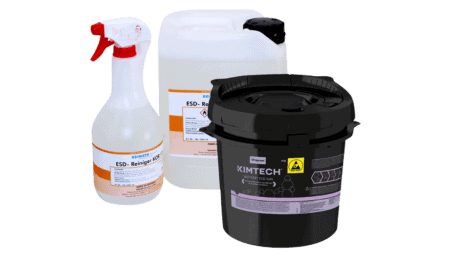
186-14010-85
KIMTECH WETTASK cleaning set (incl. dispenser, cloths and cleaner)CHF 386.90Available to order -
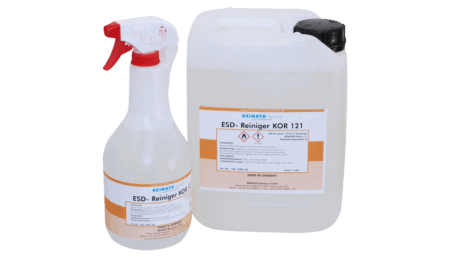 ESD surface cleaner KOR 121 with antistatic agentCHF 21.50 - CHF 83.50
ESD surface cleaner KOR 121 with antistatic agentCHF 21.50 - CHF 83.50 -
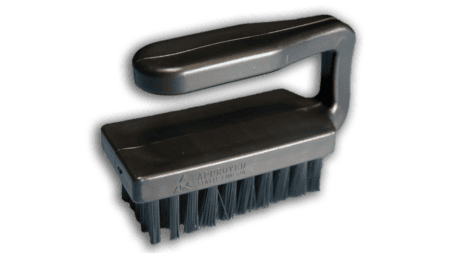
14S-B30-65
ESD dissipative brush, hard, 30 x 65mmCHF 19.903 Available immediately
Rule of conduct 8
Conductive floors and ESD-suitable surfaces may only be treated with the prescribed cleaning agents.
Conductive floors should only be cleaned with special cleaning agents. Cleaning agents containing wax are absolutely unsuitable. On many conductive surfaces such as tables, windows and covers, the conductive layer can be washed off by unsuitable cleaning agents, which impairs their effectiveness.
Rule of conduct 9
Only containers and packaging materials that are suitable for ESD protection may be used within the EPA.
Packaging material that is not suitable for ESD must be stored outside the EPA area. Tearing off and unrolling adhesive tapes can generate dangerous charges and should therefore be avoided inside the EPA. It is advisable to repack components or assemblies in conductive containers before transportation into the EPA and to observe the necessary ESD protective measures.
Rule of conduct 10
When handling electronically sensitive components and assemblies, certain important handling rules must be observed.
Components or assemblies should not be placed on metallic surfaces, as this can lead to a "hard" discharge. Placing parts on or in the immediate vicinity of screens can lead to charges in the component, which can impair the electrical function.
It is also not advisable to place components or assemblies on insulating material such as working papers, folders or foil sleeves, as this can lead to increased charging. Even faulty parts should be treated as sensitive parts until final disposal in order to avoid possible ESD damage.
What is the ESD safety situation in your company?
Here you will find the CHECKLIST:
-
 ESD bubble bags HIGHSHIELDCHF 134.10 - CHF 297.20
ESD bubble bags HIGHSHIELDCHF 134.10 - CHF 297.20 -
 ESD ball hinge boxes in various sizes, 100 piecesCHF 122.10 - CHF 284.85
ESD ball hinge boxes in various sizes, 100 piecesCHF 122.10 - CHF 284.85 -
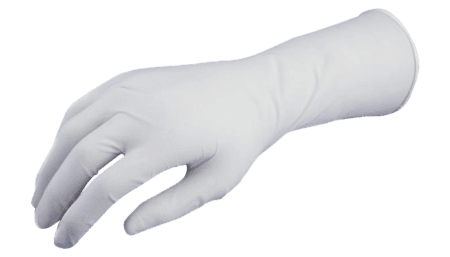 Disposable nitrile gloves, white, 1000 piecesCHF 368.20
Disposable nitrile gloves, white, 1000 piecesCHF 368.20 -
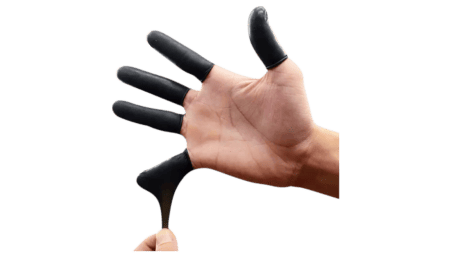 ESD finger protection black (1440 pieces), size M - LCHF 39.50
ESD finger protection black (1440 pieces), size M - LCHF 39.50 -
 ESD PVC puzzle floor, 608 x 608 x 10.5 mm, PU 5 piecesCHF 405.00
ESD PVC puzzle floor, 608 x 608 x 10.5 mm, PU 5 piecesCHF 405.00 -
 ESD warning sign "Switzerland" 250x150mmCHF 18.20 - CHF 21.40
ESD warning sign "Switzerland" 250x150mmCHF 18.20 - CHF 21.40 -
 ESD antistatic gloves without reinforcement, nylonCHF 1.40
ESD antistatic gloves without reinforcement, nylonCHF 1.40 -
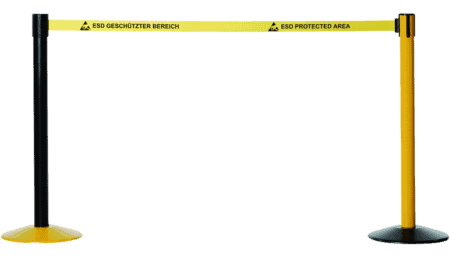
189-11802-11-S
Barrier systems for ESD protection zonesAvailable to order -

172-30014-34
EPA GATEKEEPER® net +CHF 4’895.002 Available immediately


